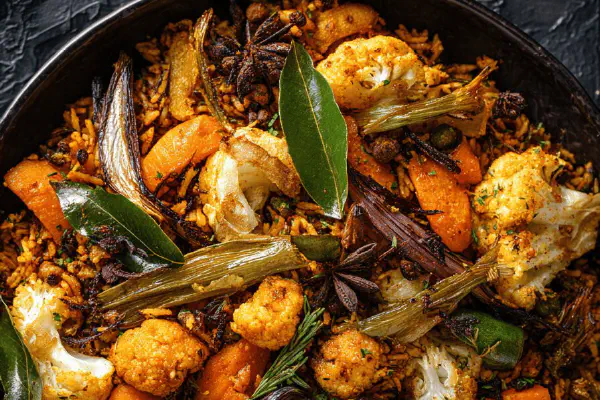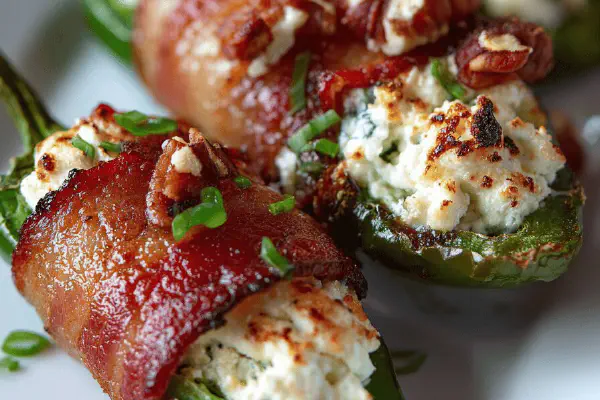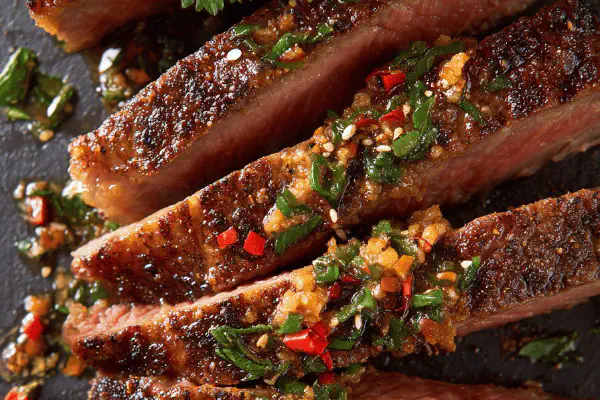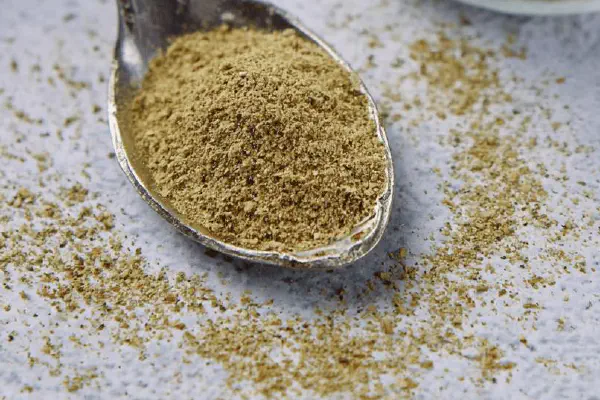Featured Recipe
Smoky Citrus Fajita Rub
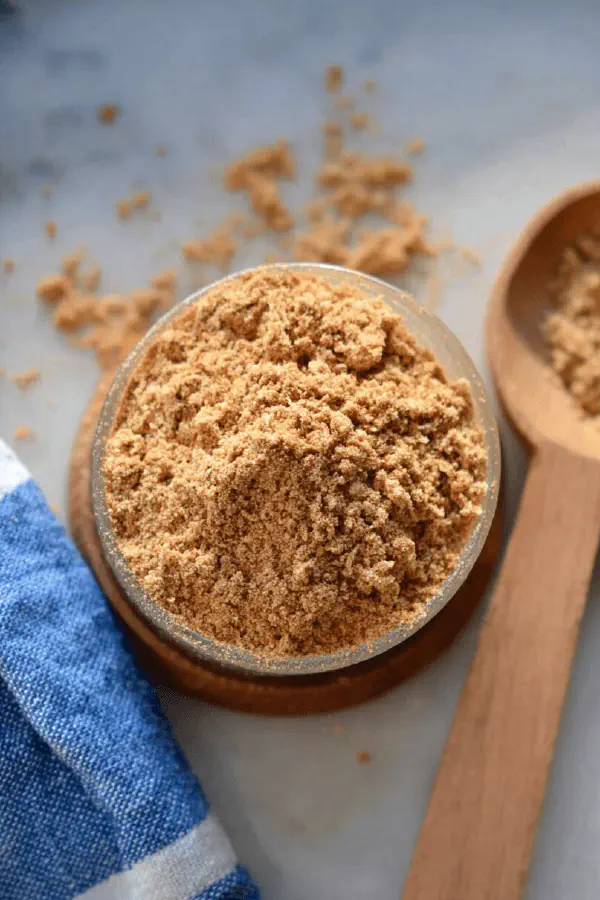
By Kate
"
A smoky, tangy, and slightly sweet dry rub balancing garlic, citrus zest, and warming spices to punch up grilled meat or veggies. Replaces some classic elements with lemon zest and chipotle for boldness. Cornstarch swapped with arrowroot for a cleaner thickener. Reduce salt, raise coriander for brightness, and swap sugar for honey powder to avoid clumps. Mix spices dry - granules matter. Store airtight, away from humidity. Recognize doneness by color deepening and aroma spike, not clock. Handles substitutions like smoked salt if no regular salt, or dried thyme if oregano’s absent. Efficient prep with a handheld whisk or mini grinder. Textured, aromatic, versatile.
"
Prep:
6 min
Cook:
0 min
Total:
6 min
Serves:
2 servings
Tex-Mex
spices
grilling
dry rub
seasoning
Introduction
Spices waiting, all lined up. The hum of a grinder or a whisk rhythm tapping. The citrus burst from lemon zest breaking open, citrus oils hitting air. You want heat, depth, a little sweet but not too much. Swap the typical chili powder with chipotle for smokiness, add honey powder instead of sugar to keep it dry but sticky in flavor. Arrowroot powder steps in for cornstarch, a cleaner thickening agent that won’t cloud sauces or leave a chalky bite. This dry rub’s about quick assembly but lasting impact. Deep smoky reds, a flick of zing, and a subtle sweetness that clings to meat and veggies, even tofu. Old habits die hard, but changing quantities by roughly a third sharpens the profile without losing familiar warmth. Store tight, away from humidity—no one likes clumpy rubs.
Ingredients
About the ingredients
Garlic and onion powder roots the blend with subtle pungency. Dried oregano adds earthiness but can be swapped for dried thyme if you’re out; thyme’s a bit sweeter but close enough. Smoked paprika’s the backbone, but chipotle chili powder pushes it into bold, smoky territory. Coriander brightens and ripens flavors; increase it for a citrusy note. Black pepper should be freshly cracked if possible — pre-ground dulls fast. Salt using fine sea salt for even dispersion; smoked salt is a smart sub for added depth but use less salty salt to avoid overpowering. Honey powder replaces sugar for dry sweetness without moisture; if unavailable, fine coconut sugar works but amounts may vary. Arrowroot provides dry thickening and binding; cornstarch works but watch for cloudiness or gummy textures. Lastly, lemon zest—just a teaspoon—lifts the whole blend with essential oils, but omit if unavailable and add a squeeze of fresh lemon juice later once cooked. Keep your blend dry, store in glass or BPA-free container, ideally in the fridge if you won’t use it fast.
Method
Technique Tips
Forget precise timing. Taste, smell, and sight rule. Lemon zest first, to avoid muddiness of aroma. Whisk folding, or quick pulse in a miniature spice grinder if spices are coarse—uniformity matters when seasoning. Mix thoroughly to avoid pockets of salt or sourness—tastes ruin plate. Airtight storage is critical to prevent moisture creep, which ruins both texture and flavor. Use as you would a curry powder or taco seasoning but keep in mind: dry rubs stick best on meat with surface patted dry. Hot pan or grill instantly heralds the right moment—listen for light sizzles, watch edges deepen without burning. Common slip: seasoning wet meat without drying first; results in clumping or burning. Prepping a large batch? Label with date and store in fridge or freezer for months. Repurpose leftovers liberally—dry rub transforms humble roasted potatoes and scrambled eggs with little effort. No stirring, no fuss. Season, sear, savor.
Chef's Notes
- 💡 Zest lemons first. No bitter pith. Citrus oils burst. Mix spices evenly—avoid clumps. Coarse granules lead to uneven flavor. Use small batches, season accordingly.
- 💡 Dry meat first for better rub adhesion. Pat surface to remove moisture. Wet meat fails to crust well. Test potency by rubbing a pinch on wrist. Fragrant but not overwhelming.
- 💡 Store in airtight glass jars. Humidity ruins flavor. If clumping occurs, reblend with a whisk. Label and date your mixes, freshness matters. Analyze visually—less degradation, better results.
- 💡 Leftovers? Use broadly. Add to roasted veggies or grilled corn. Mix with scrambled eggs—flavor boost for minimal effort. Spice is versatile; versatility enhances flavors in everyday cooking.
- 💡 Adjust salt based on dietary needs. Low sodium? Smoked salt substitutes. Chipotle? Mix smoked paprika with cayenne for kick. Be flexible—always adapt to what’s available.
Kitchen Wisdom
What’s the best way to apply it?
Rub it on dry meat or veggies. Work into surface—don’t skimp. If using on tofu, ensure moisture is pressed out.
How long does it last?
Up to six months in sealed container. If it smells off, toss it. Spices lose potency over time; use small batches.
Substitutions for ingredients?
No honey powder? Try coconut sugar, but test amounts. Coriander not available? Spike with extra cumin for similar undertones.
Can it be used for sauces?
Yes, but limit to small amounts to prevent cloudiness. Mix with oil for a marinade. Arrowroot acts cleanly; avoid cornstarch's gritty texture.
